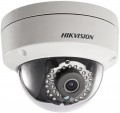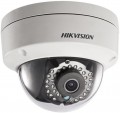Number of megapixels
Camera sensor resolution in megapixels (millions of pixels).
The higher the resolution of the matrix, the higher the video resolution can be (see below), the more detailed the image is capable of providing the camera. At the same time, note that as the number of megapixels increases (without changing the size of the matrix), the size of each individual pixel decreases, which increases the likelihood of noise and deterioration in the overall image quality. Therefore, high resolution in itself is not necessarily a sign of high quality — a lot depends on other things, for example, on the size of the matrix (see above).
As for specific values, in the most modest matrices it does not exceed 1.3 MP, which corresponds to the maximum
HD resolution.
2 MP sensors allow for already Full HD resolution (usually 1920x1080 or 1600x1200),
3 MP,
4 MP,
5 MP and
6 MP are capable of better resolution, but still do not reach
4K, which is typical for 8 MP.
Video resolution
The maximum video resolution that the camera can capture.
The higher the resolution of the video, the more details you can see on it, the less details will be blurry. On the other hand, high resolution means large volumes of video materials, which, accordingly, requires capacious media for their storage and fast communication channels for broadcasting video in real time. Yes, and this indicator significantly affects the cost of the camera.
Minimum illumination
The lowest degree of illumination of the scene being shot, in which the camera is able to provide normal visibility. Usually, this item specifies the values for the daytime mode of operation (in the night mode, the minimum illumination in many models may be zero at all, because in such cases the IR illumination is turned on, see "Design and capabilities"). And if the camera is capable of shooting in colour, it usually means the lowest illumination necessary to obtain a colour image.
The lower this indicator, the better the camera works in low light, the brighter and more clearly visible image it is able to provide in such conditions. At the same time, note that in low light, night mode is often preferable, and in the presence of the aforementioned IR illumination, it is more likely to focus on the range of its operation (see above).
There are comparative tables that allow you to evaluate the degree of illumination indicated in the characteristics from a practical point of view: for example, an indicator of 0.2 lux corresponds to clear eyes on a full moon.
Signal to noise ratio
The signal-to-noise ratio that the surveillance camera corresponds to.
This indicator describes the ratio of the level of the useful signal (the actual image produced by the camera to an external device) to the level of extraneous noise that inevitably arises during the operation of electronic circuits. Such noise appears in the image as characteristic noise (“snow”). The higher the signal-to-noise ratio, the less interference on the screen, the clearer and better the image is, and the smaller the volume of recorded video files. It is believed that visible noise practically disappears at a ratio of at least 45 dB. However, among modern cameras there are also higher rates.
Material
The main material used in the construction of the camera body.
— Plastic. Inexpensive and at the same time quite practical material. Plastic is light, quite strong (not as strong as metal, but still quite sufficient for most cases), chemically inert (and therefore not susceptible to corrosion and insensitive to moisture), and also has a relatively low thermal conductivity (which provides additional protection for extreme temperature fluctuations). Due to all this, this material is very popular in indoor chambers (see "Usage"). At the same time, it is somewhat less suitable for outdoor work.
— Metal. The main advantage of metal, in comparison with plastic, in the case of surveillance cameras is high strength and reliability. This allows you to use it even for street models that work in difficult conditions and must have a certain anti-vandal resistance (at least not immediately “give up” when trying to break or break). At the same time, such material is much more expensive, and therefore less common.

